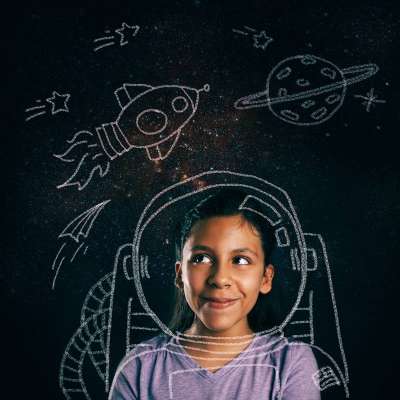How Can You Stretch Students' Thinking?
Eventually, it is important for students to learn that competing theories can be developed using the same evidence. One way to do this is to give the class the same set of evidence and ask groups to come up with competing theories. Each theory is equally valid as long as it adequately explains the available evidence. However, this does not mean that each theory is equally useful. One theory might better predict, or account for, additional evidence.
When Can You Use It?
Reading/English
A central part of reading involves developing a theory about the author's intended purpose and then continually checking the theory against evidence in the text itself. Good readers develop theories about motivations of characters in books, about the meaning of a poem, and about an author's underlying beliefs or intended effect on readers. In conversations about books, teachers should encourage students to give their interpretation of what they have read, justify that interpretation based on specific evidence from the text, and consider alternative interpretations suggested by other students. All readers can be encouraged to engage in this kind of conversation, from kindergarten through high school and beyond, from Goodnight Moon to Hamlet.
Writing
A central part of writing, especially expository writing, involves justifying statements of opinion with evidence. A good book review states a theory about the book, backed by evidence from the text itself. Students should be taught that it is not enough to simply write about their opinions, as their opinions are interesting only to the extent that they are supported by evidence. Tell students, "I am interested in reading what you think, but I am even more interested in reading why you think it." The best writers give the evidence, review alternative interpretations, and then explain why one interpretation is more believable than another, given the weight of the evidence.
Math
Mathematics is often taught as a body of facts and standard procedures to be memorized and practiced. Real mathematics is an investigative science. In mathematics, theories are called theorems, and a body of evidence is called a proof, but the relationship between the two is essentially the same. Students do not need to be taught theorems (often part of high school geometry) to begin developing and testing theories using mathematics. For example, when students are asked to estimate the number of candies in a jar, they are being asked for a theory. This is an opportunity to have students provide evidence to support their theories and to help them understand the difference between assumptions and estimations.
Many mathematical problems lend themselves to creating theories through observation and detection of patterns. For example, students are often asked to complete a series of numbers or find the area of an object that has an irregular shape. A good answer is important, but it can be less important than a good answer that has a good explanation.
Social Studies
History, economics, sociology, psychology, and all the other social sciences are rich with theory and evidence. Facts are often not as interesting or important as the interpretations of these facts. It should be expected that interpretations will be evidence-based and open to challenge when disconfirming evidence is provided. Students of all ages should be provided with plenty of opportunities to observe their culture, collect data, construct theories about the data, and check theories against further evidence. A local cemetery is a rich source of data about the community and the people who have lived in it, certain to generate a host of theories. Family histories are another source of theory-provoking data, as is one's language, supermarkets, the houses surrounding a school, or the school itself. The key is insisting on careful observation, careful collection of evidence, and careful thinking.
Science
The science classroom can and ought to be a lively forum for the generation and testing of theories of all kinds. Science teachers can make lab work (and field work) the central learning activity. Students can study and record the growth of plants, the behavior of live animals, and the interactions of plants and animals in natural habitats. They can record changes in the weather, study the composition of soil, classify shells, and dissect plants and insects. In all of these activities, however, it is not enough simply to observe and record. Students should always be asked to explain their interpretation of the data, and to justify their theories about what the data means, referencing specific evidence. In other words, explaining not just what, but why and how.
Lesson Plans
Is the Magic 8-Ball Really Magic?
This lesson plan investigates how the familiar Magic 8-Ball toy works.














